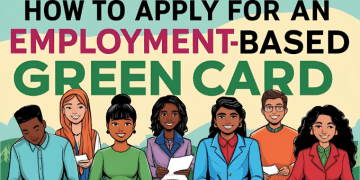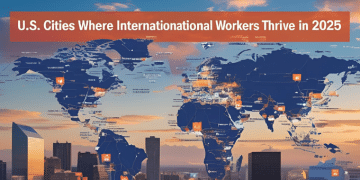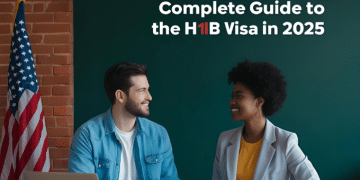Top 5 U.S. Work Visas in 2025: A Guide for U.S. Workers
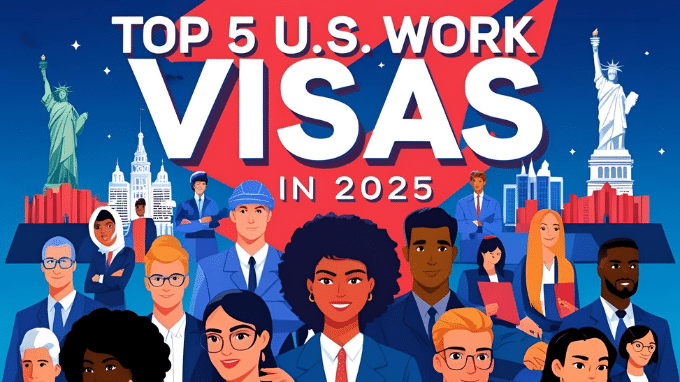
The United States remains one of the most attractive destinations for global talent seeking rewarding job opportunities, a high standard of living, and long-term career growth. Whether you’re a tech specialist, academic researcher, healthcare professional, or skilled tradesperson, the U.S. offers a variety of work visa options tailored to different qualifications and employment goals. But navigating the complex immigration landscape can be overwhelming, especially as immigration laws evolve and competition increases.
In this comprehensive guide, you’ll learn:
- The top 5 work visas USA offers in 2025 for international professionals
- Who qualifies for each visa and what documentation is required
- How to apply step-by-step, including employer and self-petitioned options
- What each visa allows, including duration, work rights, and family eligibility
- How to transition to permanent residency through an employment-based green card
- Guidance for those on OPT for students or seeking a fresh start from abroad
Why Work Visas Matter in 2025

The U.S. job market continues to show strong demand for international talent, especially in high-growth sectors like technology, healthcare, engineering, and academia. With recent updates to immigration laws and ongoing labor shortages in critical areas, work visas remain a vital pathway for filling employment gaps and sustaining economic growth.
Key Trends:
- The U.S. Department of Labor projects over 8 million job openings in high-skill sectors through 2026.
- Increased STEM funding and tech expansion fuel demand for foreign professionals.
Policy shifts in 2025 are making employment-based immigration more streamlined in select categories.
Top 5 U.S. Work Visas in 2025
1. H-1B Visa: Specialty Occupations
Overview:
The H1B Visa is the most well-known U.S. work visa for professionals in specialty occupations such as IT, finance, healthcare, engineering, and education.
Who Qualifies:
- Must have a bachelor’s degree or higher in a relevant field
- A valid job offer from a U.S. employer
- Role must meet the definition of a specialty occupation
Key Features:
- Initial stay: 3 years (renewable up to 6 years)
- Dual intent: You can apply for a green card while on H1B
- Subject to an annual cap (85,000 new visas per year)
How to Apply:
- Employer files Labor Condition Application (LCA)
- Submits Form I-129 to USCIS
- If selected via lottery (if applicable), proceed with visa processing
Pro Tip:
Start the green card process by year 2 of H1B to avoid visa expiration issues during the transition.
Read next: How to Apply for an Employment-Based Green Card: Step-by-Step Guide (2025)
2. L-1 Visa: Intra-Company Transfers
Overview:
The L-1 visa is for multinational companies transferring employees to their U.S. offices.
Who Qualifies:
- Must have worked for the foreign company at least one year in the last three years
- Transferring to a U.S. branch in a managerial, executive, or specialized knowledge role
Key Features:
- L-1A: For executives and managers (up to 7 years)
- L-1B: For specialized knowledge employees (up to 5 years)
- Spouses of L-1 holders can apply for work authorization (L-2)
How to Apply:
- Employer files Form I-129 with L classification
- Include documentation proving corporate relationship and employee role
Ideal For:
- Global professionals within Fortune 500 or multinational firms
3. O-1 Visa: Individuals with Extraordinary Ability
Overview:
The O-1 visa is reserved for individuals who possess extraordinary ability in the sciences, arts, education, athletics, or business.
Who Qualifies:
- Must demonstrate sustained national or international acclaim
- Show proof via awards, media coverage, publications, or top-tier roles
Key Features:
- O-1A: For science, education, business, athletics
- O-1B: For arts, film, or television
- Initial stay: 3 years, with 1-year extensions allowed
Application Process:
- A U.S. sponsor or employer files Form I-129
- Submit detailed evidence portfolio and advisory opinion
Great For:
- Researchers, performing artists, innovators, and entrepreneurs
4. TN Visa: U.S.-Mexico-Canada Agreement (USMCA)
Overview:
The TN Visa allows professionals from Canada and Mexico to work in the U.S. under the terms of the USMCA trade agreement.
Who Qualifies:
- Citizens of Canada or Mexico
- Job offer in a qualifying NAFTA-listed occupation (e.g., accountant, scientist, engineer)
- Must meet educational/experience requirements for that profession
Key Features:
- No cap or lottery system
- Initial stay: 3 years (renewable indefinitely)
- Faster processing at the border or consulate
How to Apply:
- Canadian citizens: Apply directly at port of entry with job letter and credentials
- Mexican citizens: Apply through U.S. embassy with a visa application
5. F-1 OPT and STEM OPT: Students Working in the U.S.
Overview:
While not a formal work visa, Optional Practical Training (OPT) provides U.S. work authorization for F-1 international students.
Who Qualifies:
- Must be an F-1 visa holder in a U.S. college or university
- Work must relate directly to the field of study
Key Features:
- Standard OPT: 12 months of work authorization
- STEM OPT Extension: Extra 24 months for eligible STEM graduates
- Helps students gain experience and transition to H1B or green card
How to Apply:
- Apply for OPT through the Designated School Official (DSO)
- Submit Form I-765 to USCIS with supporting documents
Pro Tip:
Coordinate with your employer early for H1B sponsorship if long-term employment is the goal.
Read next: H1B vs L1 Visa: Key Differences, Requirements & Which Is Better in 2025
Comparison Table: Top Work Visas USA Offers in 2025
| Visa Type | Duration | Eligible Professions | Requires Employer Sponsorship | Green Card Path |
| H1B | Up to 6 yrs | STEM, business, healthcare | Yes | Yes |
| L-1 | 5–7 yrs | Multinational execs or specialists | Yes | Yes |
| O-1 | 3+ yrs | Artists, scientists, entrepreneurs | Yes | Yes |
| TN | 3+ yrs | Canadian/Mexican professionals | Yes | No (limited) |
| OPT/STEM | 1–3 yrs | Recent U.S. grads in any field | No | Yes (via H1B or EB-2) |
Immigration Laws and Policy Watch in 2025
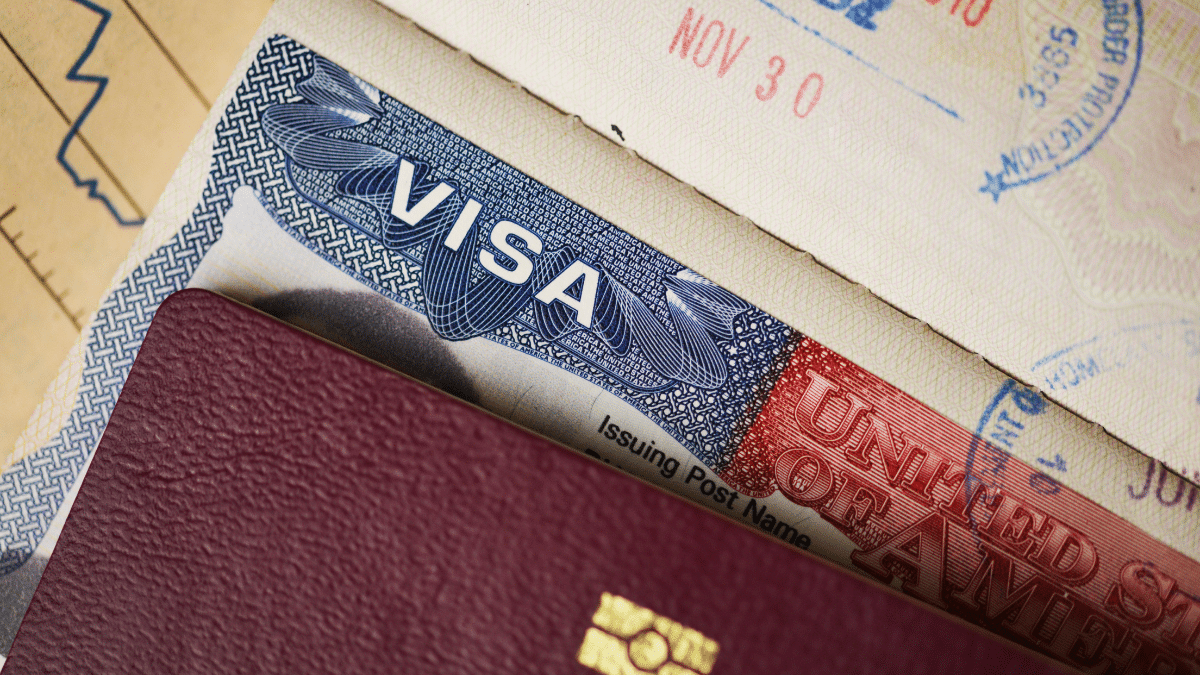
U.S. immigration laws are constantly evolving, and 2025 is shaping up to be a pivotal year. With a growing need for international talent, particularly in STEM and healthcare, U.S. lawmakers are re-evaluating several key immigration pathways to align with workforce demands and global competitiveness. Whether you’re applying for an H1B Visa, exploring work visas USA offers, or working toward an employment-based green card, staying up to date with these developments is essential.
Here are the most important immigration policy shifts to watch in 2025:
H1B Cap Reforms May Impact Lottery Odds and Eligibility
The annual H1B lottery, which currently allocates 85,000 new visas (65,000 regular + 20,000 for U.S. master’s degree holders), may soon undergo significant changes. Proposed reforms aim to:
- Prioritize higher-wage jobs and U.S. advanced degree holders
- Reduce fraudulent or duplicate applications by requiring employer registration vetting
- Shift toward a merit-based selection system instead of random lottery
These changes could improve fairness and elevate the quality of applications but may also raise the bar for first-time applicants without STEM or graduate credentials.
Fast-Tracking STEM Graduates for Green Cards
In response to labor shortages and brain drain concerns, several bipartisan bills have been introduced to expedite green cards for international graduates in STEM fields.
What to expect:
- Exemptions from annual green card caps for certain advanced STEM degree holders
- Streamlined National Interest Waiver (NIW) criteria for AI, cybersecurity, biotech, and climate-related disciplines
- Encouragement for F-1 visa holders to transition directly to permanent residency without needing employer sponsorship
This is especially beneficial for students on OPT who want to stay and build long-term careers in the U.S.
Digital Visa Processing and Backlog Reduction
USCIS is ramping up efforts to reduce application backlogs and processing delays. Initiatives already in motion include:
- Expanded premium processing for more visa types, including EB-1, EB-2, and NIW
- Improved case tracking tools and notification systems for applicants
- Piloting of AI-assisted adjudication tools to streamline straightforward applications
These changes are expected to significantly cut wait times and enhance transparency for foreign professionals and sponsoring employers alike.
Read next: Complete Guide to H1B Visas: Requirements, Process, and Cost
Trusted Sources to Monitor Immigration Policy
To avoid misinformation and stay ahead of important immigration law updates, always rely on official and well-established channels:
- USCIS.gov: Application forms, policy updates, processing times
- Travel.State.Gov: Visa bulletins, embassy procedures, consular guidance
- Congress.gov: Ongoing immigration bills and proposed legislation
- Legal and immigration-focused media like AILA, Boundless, and Fragomen
Tip: Set up email alerts from USCIS and Visa Bulletin updates to get notified the moment your priority date becomes current or a new rule is enacted.
Take the Next Step Toward Your U.S. Career
Securing the right visa is the first milestone in building a successful future in the U.S. Whether you’re applying for the H1B Visa, seeking a transfer through the L-1, showcasing your talent on the O-1, or transitioning from OPT for students, the U.S. offers diverse and powerful work visa options in 2025.
By understanding your eligibility, staying organized with documents, and working with immigration professionals, you’ll be well on your way to living and working legally in America—and potentially gaining permanent residency through an employment-based green card.
Ready to explore your options? Contact an immigration attorney or career advisor to map out your visa path today. Your American dream is closer than you think.
